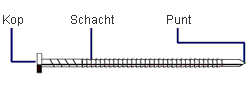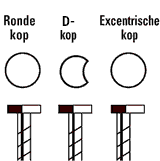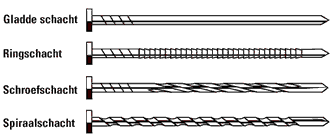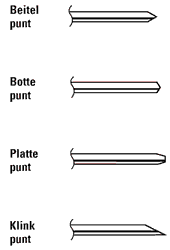Buy nails on strip? Strip nails are mainly made to securely fasten coarser materials. So indispensable on the construction site! Note: Always check the minimum and maximum length of fasteners your tacker is suitable for. It is also important to pay attention to whether the angle of your loading magazine corresponds to the degrees in which the strip nailer comes. You can find this information in the instruction manual or on the corresponding product page.
We have a wide range of products, most of which we have in stock as standard. Order your strip nails on Tackershop.
Manufacturer: Bestfix
Model: S333
Stick nails with a plain shaft. The nails have a D-head and are welded together with a metal wire.
Diameter shaft: ø 3,33 mm
Angle: 28°
Qty: 2.000 pcs per box..
€70.02
Ex Tax:€57.87
Manufacturer: Bestfix
Model: S333S
Stick nails with a screw shank. The nails have a D-head and are welded together with a metal wire.
Diameter shaft: ø 3,33 mm
Angle: 28°
Qty: 2.000 pcs per box..
€98.63
Ex Tax:€81.51
Manufacturer: Bestfix
Model: S310R90G8
Galvanized strip nails with a smooth shank. The nails have a D-head and are bound together with a metal wire (wire weld).
Nail shaft: ø 3.10 mm
Length: 90 mm
Angle: 28°
Packaging: 2,000 pcs..
€82.95
Ex Tax:€68.55
Manufacturer: Bestfix
Model: S280R..G8
Galvanized stick nails with a ringed shaft. The nails have a D-head and are welded together with a metal wire.
Diameter shaft: ø 2,80 mm
Angle: 28°
Qty: 2.000 pcs per box..
€60.48
Ex Tax:€49.98
Manufacturer: Bestfix
Model: S280R..
Stick nails with a ringed shaft. The nails have a D-head and are welded together with a metal wire.
Diameter shaft: ø 2,80 mm
Angle: 28°
Qty: 2.000 pcs per box..
€50.00
Ex Tax:€41.32
-737x262.webp)









